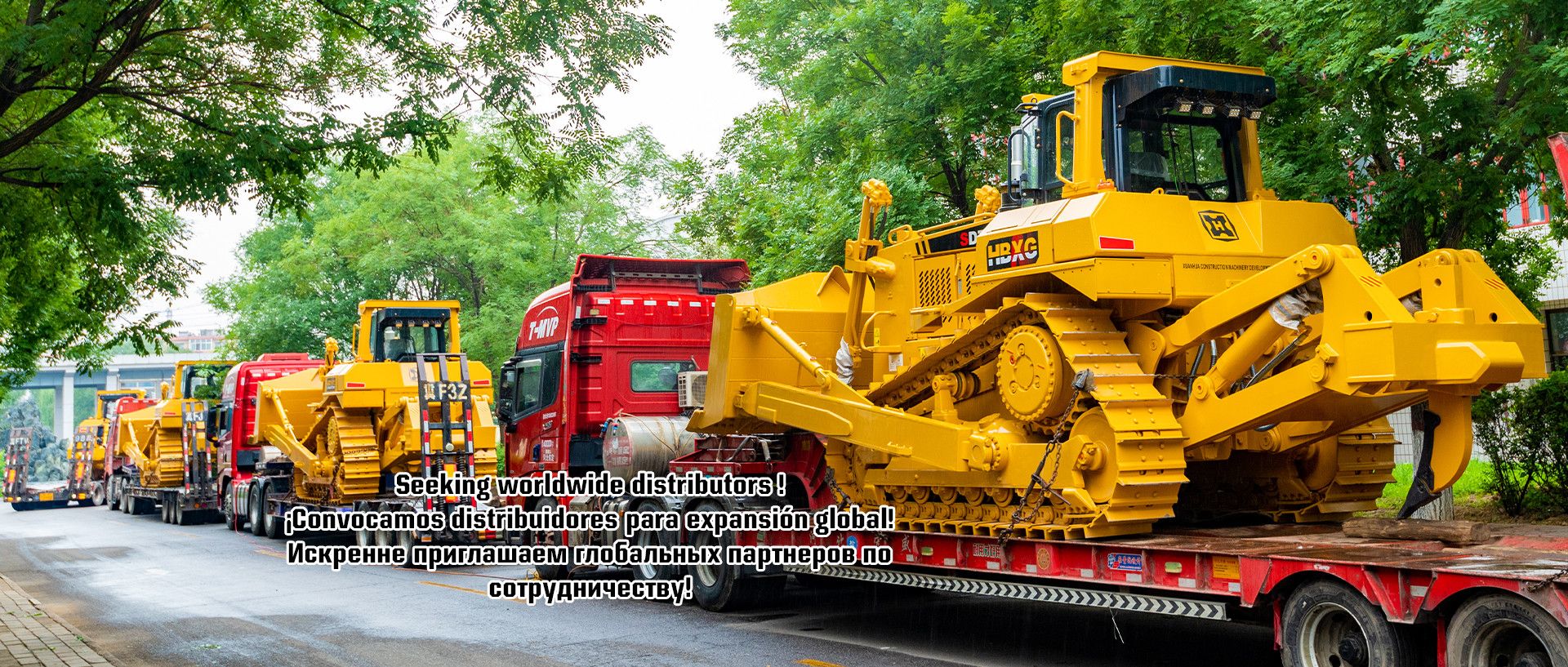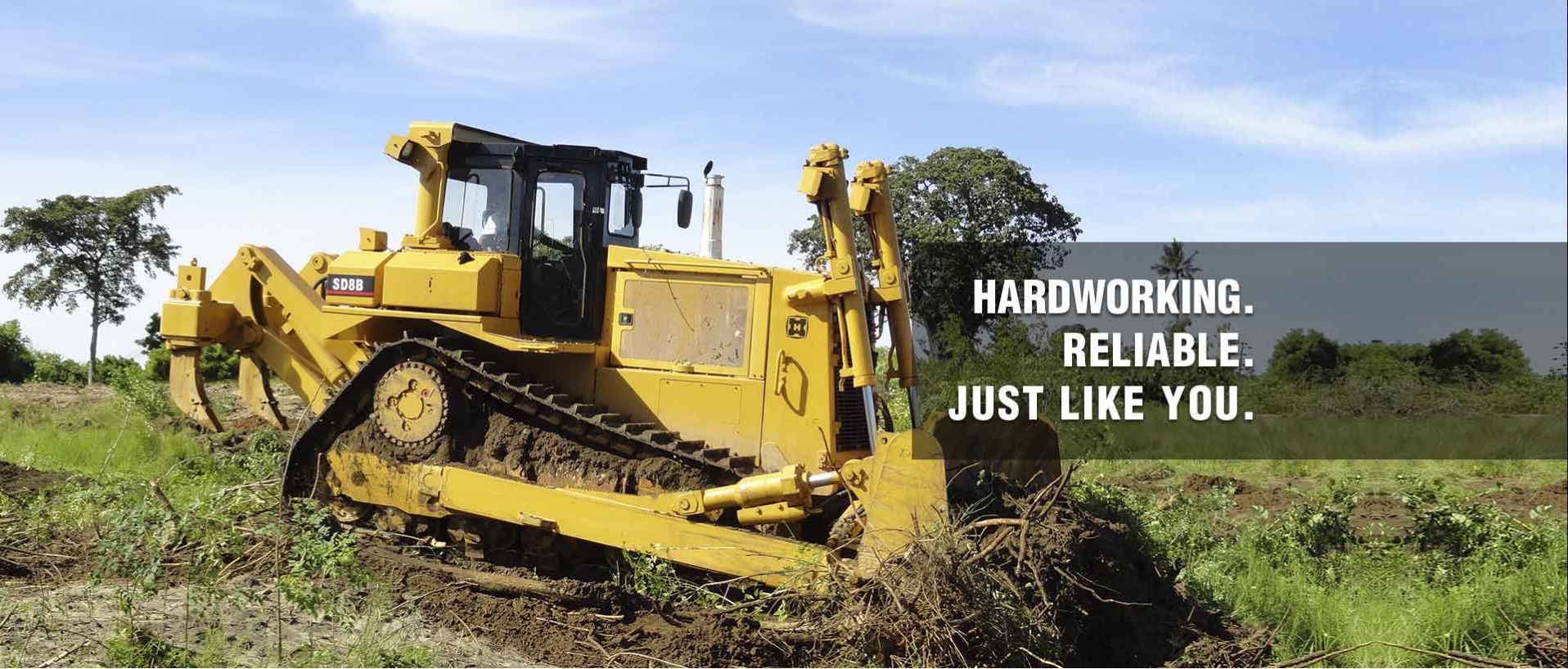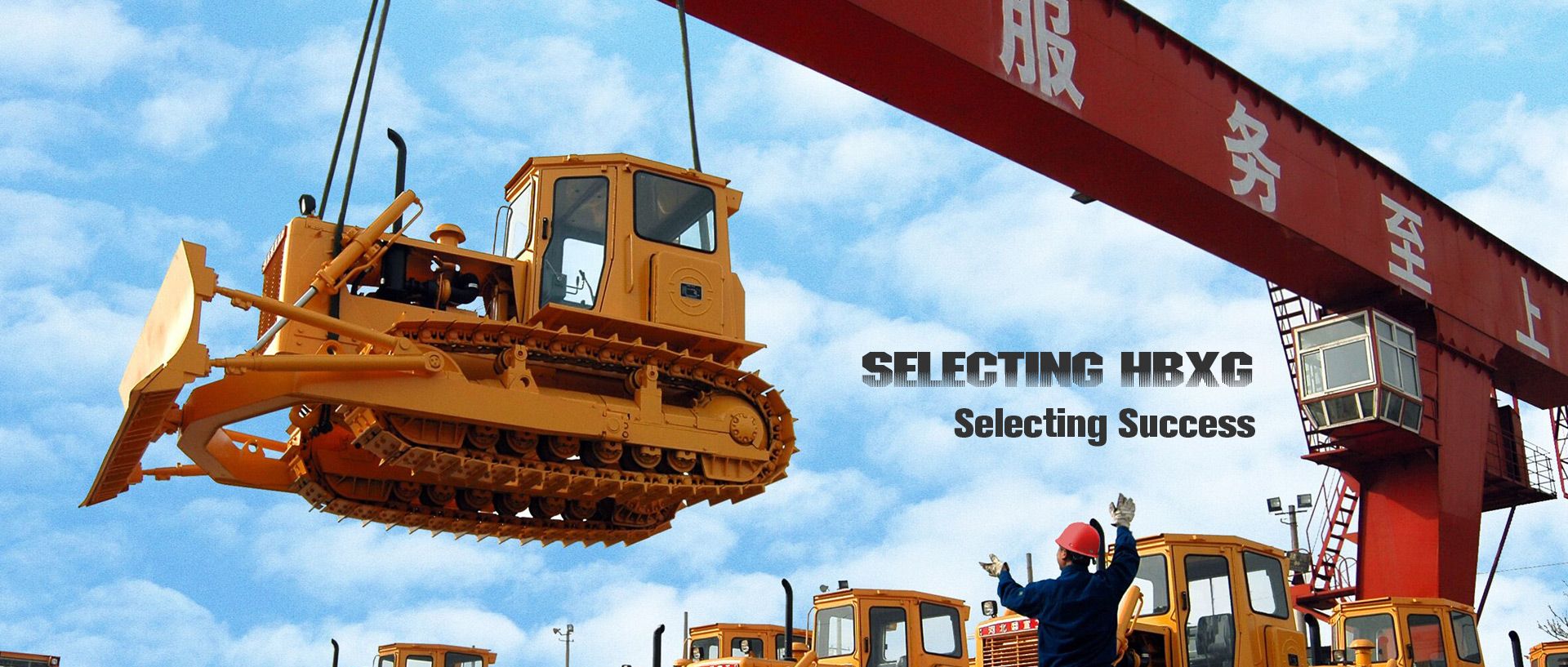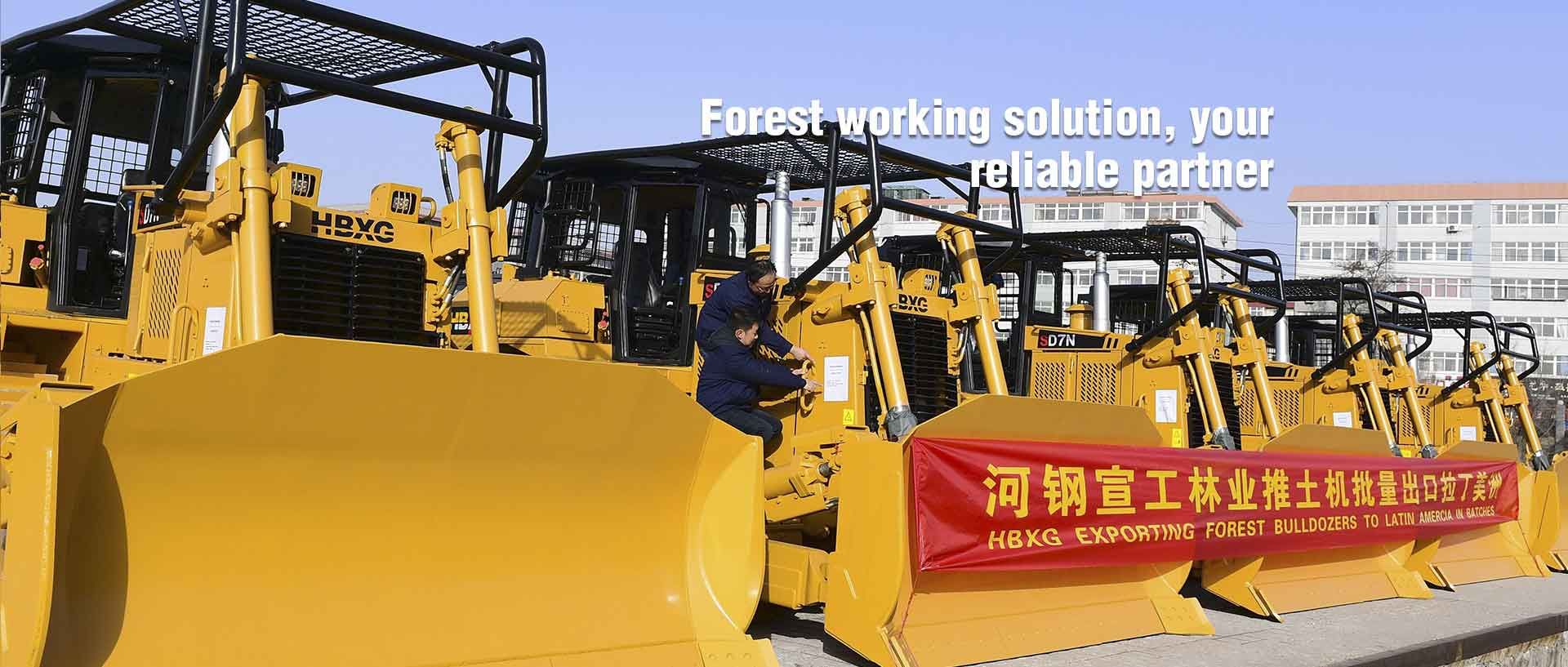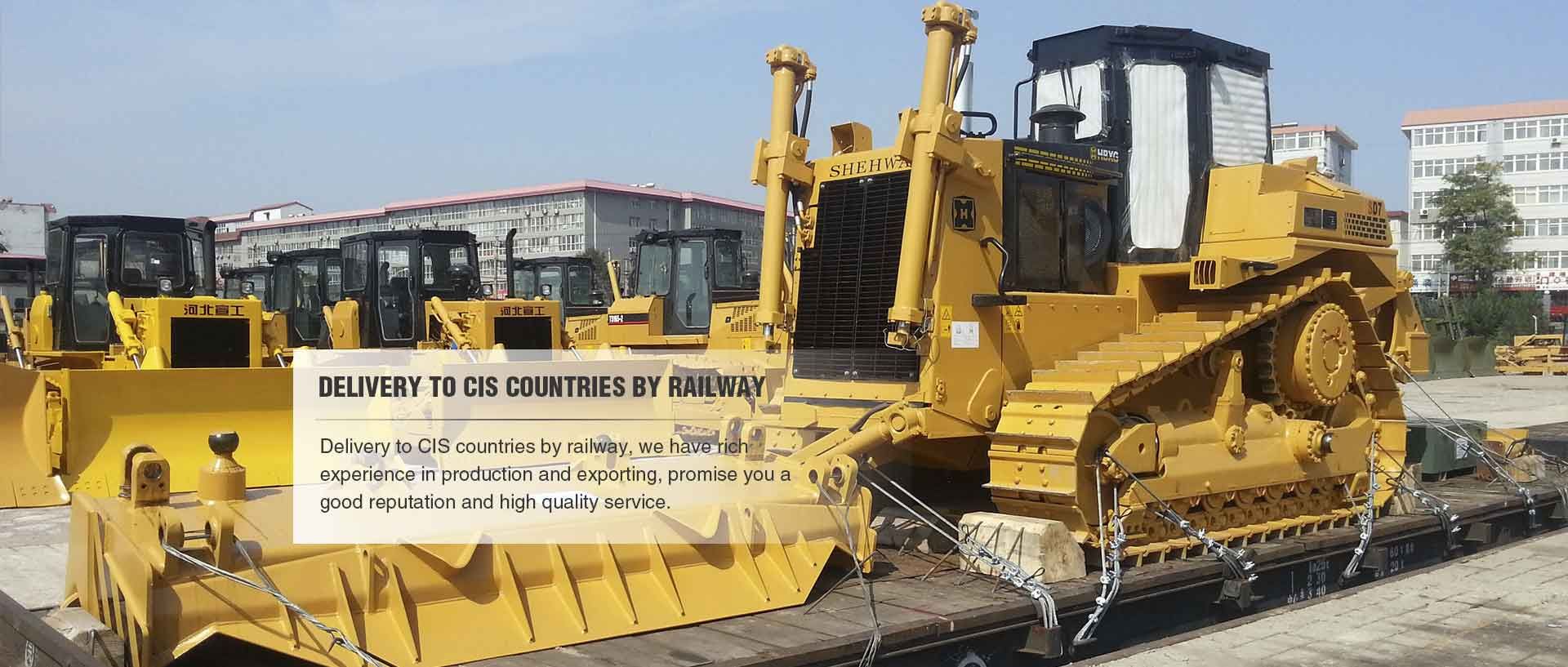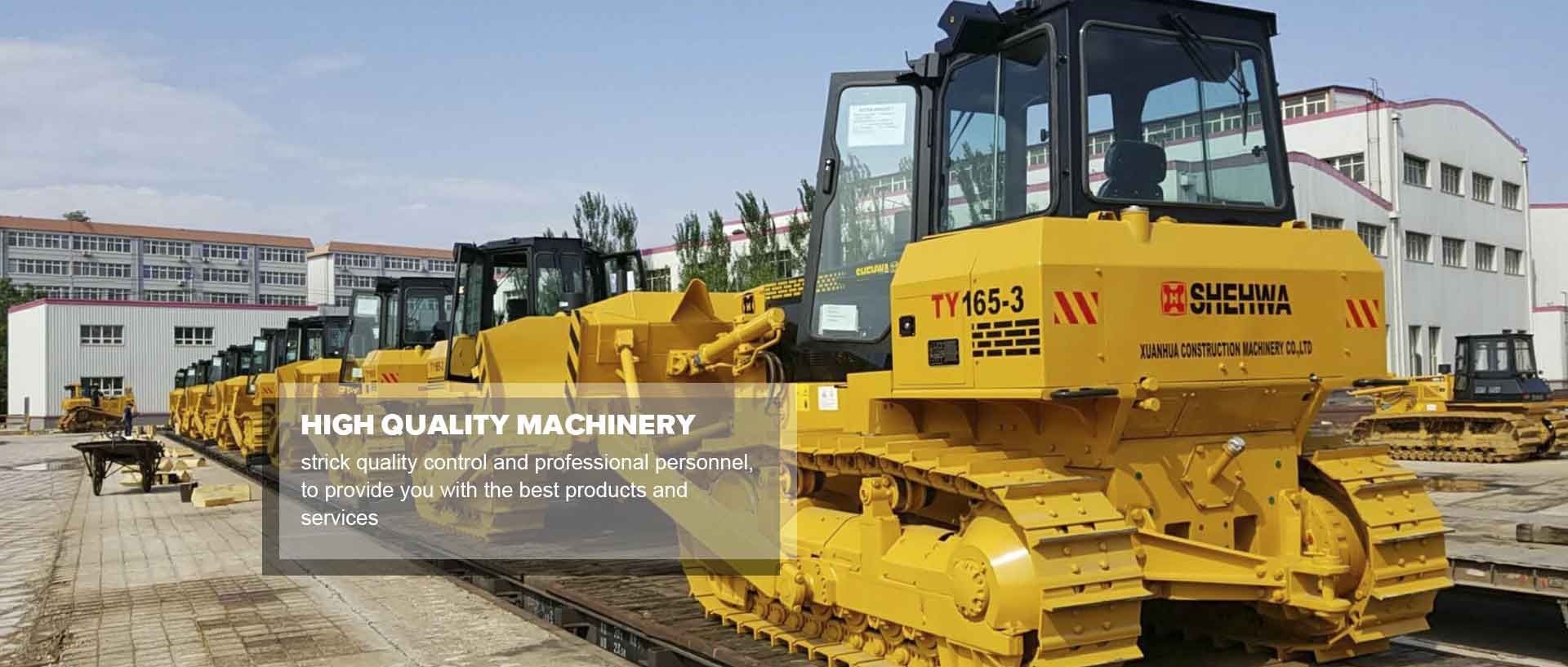Do You Know How To Operate A Crawler Bulldozer?
 Apr. 17, 2020
Apr. 17, 2020
Do you know how to operate a Track Bulldozer? When shifting into gear, first, push the throttle handle to the low-speed idle position, and then push the main clutch lever to the front to disengage the main clutch. Due to the small break in the main clutch, the power input shaft of the transmission stops rotating. At this time, you can move the shift lever to the desired gear correctly, and then put the forward and backward levers to the forward or backward position (when the bulldozer moves forward, pull them forward and backward levers backward, and when backward, push forward). After the gear is engaged, pull the throttle handle backward to increase the engine speed, and connect the main clutch smoothly, and the bulldozer starts to run.
When the Dozer is driving, the main clutch lever should be pulled to the rear, and should not be placed in the semi-engaged position. Because the main clutch half-engaged will increase friction plate wear. Bulldozer transmissions generally have five forward gears and four reverse gears. The advancing and retreating the lever can change the traveling direction of the bulldozer.
The bulldozer should be operated at the highest speed as possible to improve operational efficiency. However, the driver should always pay attention to whether the engine is running normally. When the engine is overheated, and the exhaust emits black smoke, the speed should be appropriately reduced.
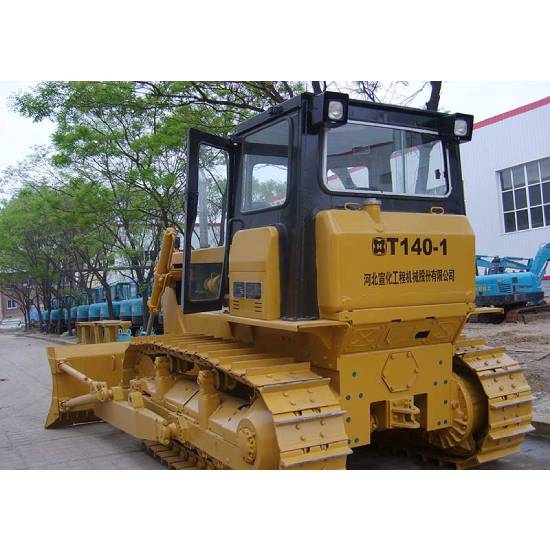
Dozer
When the Crawler Dozer is turning during operation, the steering clutch lever of the steering can be pulled back to disengage the steering clutch, so the crawler speed of the corresponding side becomes slower, and the bulldozer starts to turn. In order to make the bulldozer turn sharply, in addition to disengaging the steering clutch, the corresponding brake pedal should also be depressed. Generally, sharp turns are only allowed when the first gear is running. When the brake is not used, the foot should not be placed on the brake pedal. Otherwise, it will cause the brake belt to wear and increase fuel consumption.
When the bulldozer turns, the brake pedal should be stepped on steadily to avoid jumping when turning. After turning, the brake pedal should be released first, and then the joystick should be released. If the turning radius is large, there is no need to step on the brake pedal. When it is not necessary, avoid turning the bulldozer on the spot at high speed to avoid accidents caused by track derailment.
Different types of bulldozers have different climbing capabilities (generally 30 °), and the slope and terrain that the bulldozers of the same structure can adapt to are different. The driver should be familiar with the climbing limit of the model used to avoid landslides due to insufficient uphill and downhill capabilities.
Before going uphill, you should choose the appropriate speed gear according to the terrain, slope size, and length, and you are not allowed to change gears during climbing. When going uphill, the bulldozer should run at a vertical angle to the lateral direction of the hillside, and horizontal driving is not allowed on steep slopes; the blade can be lowered properly so as not to affect the line of sight, and the blade can be quickly landed to help the bulldozer in case of a landslide Braking; if the engine stalls on the way uphill, stop the fuel supply immediately, put down the blade and brake urgently. When it is impossible to stop on the slope, it should be reversed and slowly slide to the bottom of the slope (slip while braking), and then start; if the fuel supply is not stopped and the gear is slipped down in the forward gear, the power will be transmitted back to the engine. It causes reverse ignition, causing the air cleaner to spray oil outward. In the case of reverse fire, the throttle should be closed quickly, and the bulldozer should be braked. Before restarting, check that the gear lever is in neutral. When the bulldozer goes downhill, the small, low-speed throttle should be used, and the brake pedal should be used.
When the bulldozer needs to pass through obstacles such as large earthbags or cliffs, it should be driven slowly at a low speed. When reaching the apex, the moment the fuselage will tilt forward, the clutch should be quickly disengaged so that the front of the bulldozer slowly touches the ground, and then the clutch is engaged to continue the advance. It is forbidden to cross the obstacle obliquely, and do not pull the steering rod when driving on the obstacle.
When you pass the rocky beach, you must choose a route in advance and keep driving. You should turn as little as possible on the way, and you should drive at low speed and small throttle. You should not drive at high speed and large throttle on the bumpy, rocky beach and make sharp turns.















